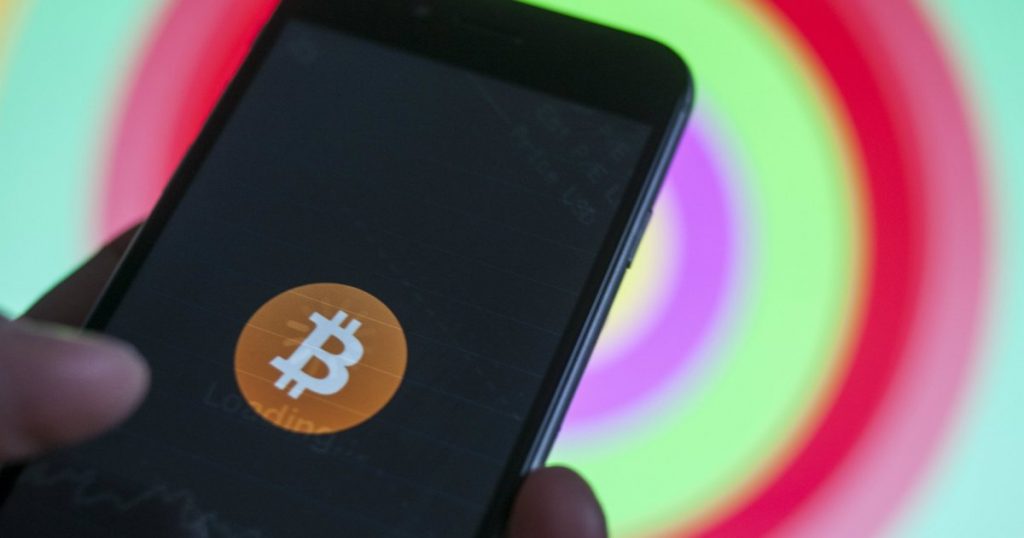Thinking About Investing in Bitcoin? Take a Look at How It’s Ruining the Planet in Real Time.
This story was originally published by Wired and is reproduced here as part of the Climate Desk collaboration.
Let me freak you out for a second. You know what bitcoinis, right? I mean, no, but quickly, it’s a “cryptocurrency” that’s basically secret computer money. One bitcoin, which doesn’t actually have a real, physical form, is worth at this moment upward of $16,000. But to get one, you either have to buy them from online exchanges or use specialized computing hardware to “mine” it. That last bit is where the freak-out comes in.
In a report last week, the cryptocurrency website Digiconomics said that worldwide bitcoin mining was using more electricity than Serbia. The country. Writing for Grist, Eric Holthaus calculated that by July 2019, the Bitcoin peer-to-peer network—remember BitTorrent? Like that—would require more electricity than all of the United States. And by November of 2020, it’d use more electricity than the entire world does today.
That’s bad. It means Bitcoin emits the equivalent of 17.7 million tons of carbon dioxide every year, a big middle finger to Earth’s climate and anyone who enjoys things like coastlines, forests, and not dying of mosquito-borne diseases. Refracted through a different metaphor, the Bitcoin P2P network is essentially a distributed superintelligence utterly dedicated to generating bitcoins, so of course it wants to convert all the energy (and therefore matter) in the universe into bitcoin. That is literally its job. And if it has to recruit greedy nerds by paying them phantom value, well, OK. Unleash the hypnocurrency!
The idea of bitcoin still has the whiff of genius—a digital currency as untraceable and trustworthy as cash, unfettered from nationality and physicality, with egalitarianism and access built into its philosophical and technical firmware. But the reality, exposed by bitcoin’s remarkable run-up in value over the last three months, is that the science may not hold together. Which isn’t to say people aren’t trying to fix it.
The thing that makes Bitcoin bitcoiny is the blockchain, the secure ledger of all payments and trades. The point of the P2P bitcoin network is the generation and maintenance of that ledger, and technically anyone can contribute updates—those recordings of transactions are blocks in the chain. But there’s a catch. (This was the bit of genius in bitcoin inventor Satoshi Nakamoto’s pitch, whoever the almost certainly psuedonymous “Satoshi Nakamoto” is or are.) In order to contribute a block, you also have to solve some really hard math, a “hashing algorithm” called SHA-256.1
“The nice thing about proof of work is that there is no admission step,” says Emin Gün Sirer, codirector of the Initiative for Cryptocurrencies and Smart Contracts at Cornell University. “If you can come in and suddenly start solving these cryptographic puzzles at the heart of it, you can contribute to the upkeep of the ledger.”
You can’t trick your way into solving that math. The SHA-256 algorithm is designed, intentionally, to be so hard that it requires brute-force computing. Try as many computational answers as you can, as fast as you can. Which means you have to keep your computer turned on all the time, running the fan to cool off your hot, overclocked processor. “The energy consumption is a security feature. It’s a good thing,” Sirer says. “To take over the system, you’d have to spend at least as much as what the system is spending now. You have to own 51 percent of all the hashing power.”
This is a feature, not a bug (is what a distributed superintelligence would say). “If you described the model and said, ‘not only is nobody in charge but nodes can join or leave the network at any time, yet everyone establishes a consensus view on the blockchain,’ it wasn’t something computer scientists thought was possible,” says Joseph Bonneau, a computer scientist at NYU. “The fact bitcoin was able to do this at all was a big surprise and innovation. The cost is that it uses proof of work, and the point of that is to make the blockchain expensive to add to.”
“If you described the model and said, ‘Not only is nobody in charge but nodes can join or leave the network at any time, yet everyone establishes a consensus view on the blockchain,’ it wasn’t something computer scientists thought was possible.”So that’s where the egalitarian thing breaks down. In the beginning, cryptocurrency enthusiasts could run mining software on their home computers. That evolved. First people realized that graphics processing units were better at those hash computations than plain old CPUs. They used more power and required more elaborate cooling, but still. And then people started customizing Field Programmable Gate Array chips, bought off the shelf and then customized for mining. These days, the preferred hardware is Application-Specific Integrated Circuits, made to order in Bitcoin-specific configurations and installed in specialized data centers.
Not only does that centralize bitcoin mining, but it also screws up energy usage. The most advanced bitcoin miners now expend 0.3 watts per billion hash calculations, or “gigahashes.” Flip that math around and you get 300 Gh per second per kilowatt. So the sketch is basically 13,600 petahashes per second with 234 kWh consumed by every transaction, giving you 32.71 terawatt-hours consumed by the Bitcoin network—or 0.15 percent of the total world consumption of electricity.
More efficient hardware won’t solve that problem. Between 2014 and 2017 the hash rate went from 300,000 to 2 million per second, and hardware efficiency went from 2,000 megahashes per joule to 10,000 MH/J, says David Malone, a computer scientist at Maynooth University. So it roughly canceled out. In 2017 the hash rate went to nearly 12 million, Malone says, “but the hardware hasn’t improved much.”
So power consumption went up, and bitcoin miners are now building ASIC clouds in places where electricity is cheap, like Iceland (where thermal energy is plentiful) or China (where electricity is underwritten by the government and bitcoin is a good way to speculate without regulation). Because that’s where they can bring more servers online to mine more bitcoin.
“Now, let’s be fair to bitcoin, without minimizing the problem,” Sirer says. “The energy costs of using any other mechanism for keeping track of assets, for reconciling them, for ensuring that books are well-ordered or the energy costs of running a cash-based economy, printing money, handling cash, pulling banknotes out of circulation and printing new ones—they were about comparable when I looked at this a year ago.” So mmmmmaybe. Digiconomy estimates that the entire Visa credit network uses about a three-thousandth the total energy of Bitcoin. That doesn’t take into account the electricity used by Visa offices, but on the other hand, unlike with bitcoin you can actually buy things with Visa. Oh, and Google—all of Google, the whole Google—used only 5.7 TWh in 2015 and went completely renewable in 2017.
Miners took advantage of faster, more efficient hardware not to use less electricity but to do more mining. That’s how people always deploy more energy-efficient technologies. It happened with steam. It happened with oil. It’s happening with LEDs—they’re more energy-efficient, but their introduction hasn’t reduced overall power used for lighting. People have just installed more, brighter lights. “The greater the value of a bitcoin, the more electricity people will be willing to spend to compete for it,” says Michael Taylor, a computer scientist at the University of Washington. “Increasing the energy efficiency of bitcoin SHA-256 mining hardware helps only sublinearly, as improving energy efficiency simply means people can deploy more miners at the same operating cost.”
Proof of work is a problem. So maybe you could get rid of it. Cryptocurrency researchers are thinking about other approaches. One,
resource-efficient mining, lowers the workload but uses trusted hardware to do it. Another, proof of stake, trades computational work for prior value. “You just kind of let people create blocks in proportion to the currency they hold, so the big currency holders make most of the blocks,” says Bonneau. In other words, instead of making mining computationally expensive, you just make it expensive. “It would possibly drive the power consumption down to almost zero, but we haven’t really—” he pauses here “—there’s a couple of research teams working on this,” Bonneau finishes.
Does a bitcoin aristocracy sound good, though? “It’s not clear that it’s worse than giving the ability to create a block to whoever is willing to burn the most electricity,” Bonneau says, “which is just operators in the Chinese desert getting subsidized power, or wherever else in the world.”
“It’s not clear that it’s worse than giving the ability to create a block to whoever is willing to burn the most electricity, which is just operators in the Chinese desert getting subsidized power, or wherever else in the world.”All right, then, let’s take a different tack. Right now, the hash algorithm is useless work, intentionally. It’s burned. How about making it do something useful? It’s a P2P network doing collaborative computation. What about making it find signals from aliens, or figure out how to make proteinsuseful to medical science, or solve real-world crypto problems and prime factorization? And but no. “I’ll tell you why that didn’t happen, and it’s perverse,” Sirer says. “Had bitcoin been mined by doing something useful, then there would be a correspondence between useful work and the number of bitcoins you get…That creates a mental anchor point in people’s mind for how much a bitcoin should cost.”
See, right now, the cost of a bitcoin floats arbitrarily. It’s socially determined. Right, because you wouldn’t want an international currency to have a logical exchange rate, becauhheyyy waitaminute. Money is supposed to have exchange rates with other money! That’s one of the things that makes it money. And the computational work of transnational P2P network shouldn’t just be bullshit, right? “I initially thought it still should have been more useful, but there you are,” Sirer says. “Why couple your fate to something like protein folding? What happens when protein folding becomes easy to do by other means? You end up intertwining the fate of your brand-new system with other technologies.”
You can’t get rid of proof of work. You can’t make the work useful. (Or, if you did either of those things, you might have some other cryptocurrency, but you wouldn’t have bitcoin.) Making the hardware more efficient doesn’t help. But come on. Let’s not say Bitcan’t. Let’s say Bit can.
If the goal is to reduce the energy load, what about doing something more interesting with the hardware? “A good short-term solution would be to recover the waste heat for heating,” Taylor says. He points, for example, to Stockholm’s effort to heat homes with exhaust from data centers. To the extent that a city was going to burn fossil fuels to heat homes, this is an environmentally friendly solution that gets more value.”
True, but it also has the something-for-nothing vibe that makes physicists nuts. It also requires building a whole new infrastructure around ASIC clouds, even though everyone knows that mining hardware improves and changes. The fact is, the cheapest, highest-density energy comes from climate-change-causing fossil fuels, and the bitcoin-mining system incentivizes the cheapest energy. I like, a little bit, the idea of sticking a thermoelectric couple onto the outside of a bitcoin-mining system and turning the heat directly into electricity, like a Biolite stove, but still—thermodynamics says you only get what you pay for.
If mathematics and physics won’t help, maybe economics will. Bitcoin miners run hardware for only as long as the rewards—bitcoins mined—can pay for the electricity. If the value of the bitcoins goes down or the price of the electricity goes up, off go the servers. The hash problems get exponentially harder, and every four years the size of the reward cuts in half. It’s 12.5 bitcoins per block right now, but “the next drop is in June 2020,” Taylor says. “As the price of bitcoin stabilizes, then the net worldwide energy, because of the block reward, will start to decrease rather than increase.”
The declining rewards put a cap on the total number of bitcoins that can ever be in the world. It’s 21 million, and the current trend line leads to them being nearly all mined out around 2032.2 Once that happens, transaction fees will be the only reward built into the system. Some other cryptocurrencies, maybe more energy-efficient ones, will start looking more competitive. Right now, bitcoin looks increasingly like a tool for speculation rather than a viable, mainstream currency. And one scientific law that math, physics, and economics all share is this: Bubbles pop.
1 UPDATE 12/15/17 7:40 AM Fixed a typo in the name of the cryptographic hash 2 UPDATE 12/15/17 1:20 PM Updated to clarify that 99 percent of bitcoin will be mined by 2032.





